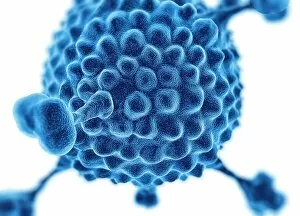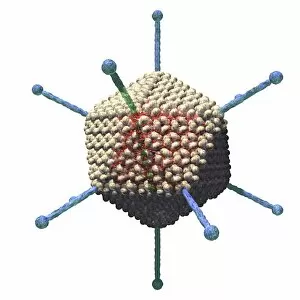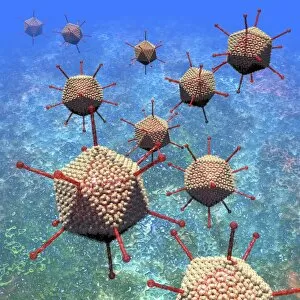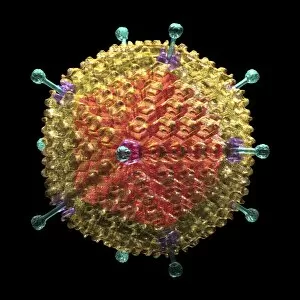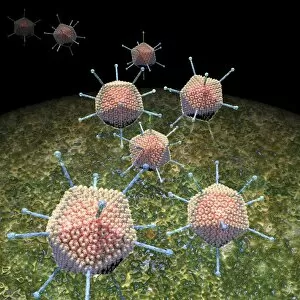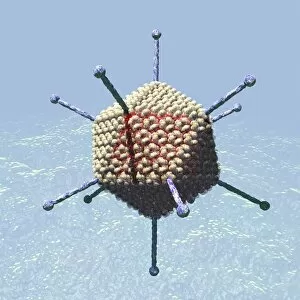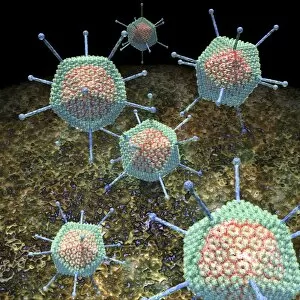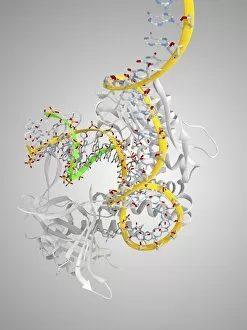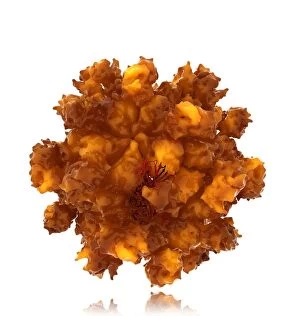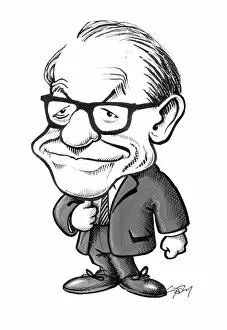Protein Structure Collection
"Unveiling the Intricate Beauty of Protein Structure
For sale as Licensed Images
Choose your image, Select your licence and Download the media
"Unveiling the Intricate Beauty of Protein Structure: A Visual Journey through Adenovirus and Notch Transcription" Step into the captivating world as we explore the mesmerizing artwork depicting various aspects of scientific marvels. Delve into the intricate realm of Adenovirus, where its unique composition is beautifully portrayed in artworks C016 / 8960, C016 / 8961, C016 / 8962, and C016 / 8963. These stunning visuals offer a glimpse into the complex architecture that allows this virus to invade host cells. Witness the elegance of Human adenovirus 36 in artwork C016 / 8966 as it showcases how proteins come together to form an infectious agent capable of causing diseases. The accompanying artwork C016 / 8965 further emphasizes our fascination with Adenovirus particles, highlighting their structural intricacies that contribute to their pathogenicity. But our exploration doesn't end there; let us turn our attention towards another remarkable molecular model – Notch transcription. This extraordinary depiction is repeated multiple times (molecular models) emphasizing its significance in unraveling cellular communication pathways. Marvel at its three-dimensional representation and grasp how proteins play a pivotal role in regulating gene expression. Through these captivating visuals, we are reminded that they are not just mere scientific entities but also works of art themselves. Their complexity and beauty intertwine seamlessly, capturing both scientists' curiosity and artists' imagination alike. So join us on this visual journey as we celebrate the wonders hidden within protein structures – from Adenovirus's artistic portrayal to Notch transcription's elegant molecular model – reminding us once again why nature's creations continue to inspire awe and fuel endless discoveries in science and art alike.

